Rank Species | Genus Rhus Higher classification Sumac | |
 | ||
Similar Sumac, Rhus glabra, Tree of heaven, Anacardiaceae, Cotinus coggygria | ||
Edible wild plants staghorn sumac rhus typhina wilderness survival tips and courses
Rhus typhina syn. R. hirta, the staghorn sumac is a species of flowering plant in the family Anacardiaceae, native to eastern North America. It is primarily found in southeastern Canada, the northeastern and midwestern United States and the Appalachian Mountains, but is widely cultivated as an ornamental throughout the temperate world.
Contents
- Edible wild plants staghorn sumac rhus typhina wilderness survival tips and courses
- Staghorn sumac rhus typhina identification video
- Etymology
- Description
- Cultivation
- Other uses
- References
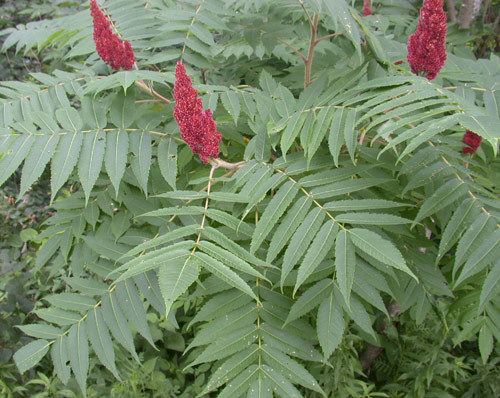
Staghorn sumac rhus typhina identification video
Etymology
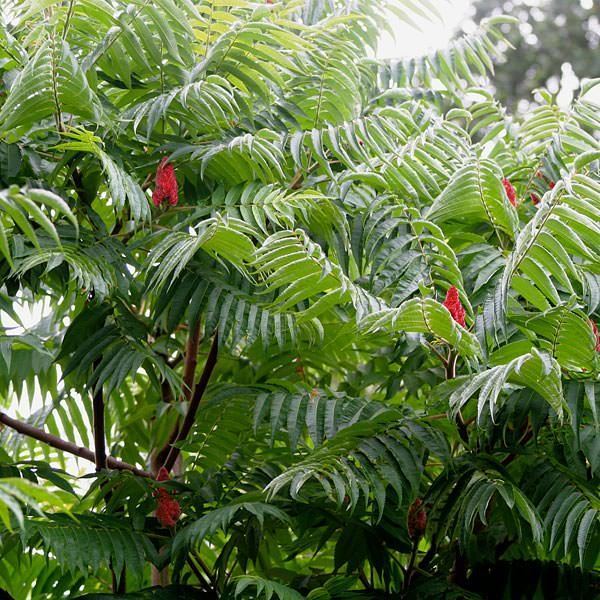
The specific epithet typhina is explained in Linnaeus's and Ericus Torner's description of the plant with the phrase "Ramis hirtis uti typhi cervini" meaning "the branches are rough like antlers in velvet".
Description
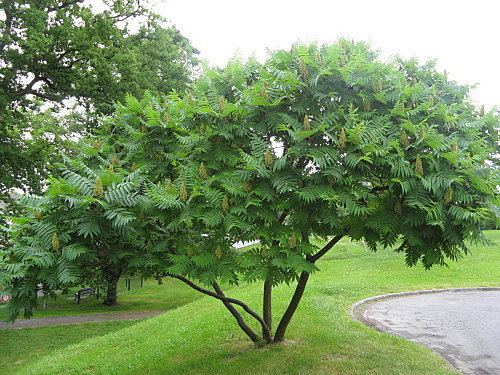
Rhus typhina is a deciduous shrub or small tree growing to 5 m (16 ft) tall by 6 m (20 ft) broad. It has alternate, pinnately compound leaves 25–55 cm (10–22 in) long, each with 9–31 serrate leaflets 6–11 cm long. The leaf petioles and the stems are densely covered in rust-colored hairs. The velvety texture and the forking pattern of the branches, reminiscent of antlers, have led to the common name "stag's horn sumach".
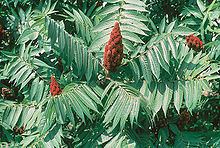
Staghorn sumac is dioecious, and large clumps can form with either male or female plants. The fruit is one of the most identifiable characteristics, forming dense clusters of small red drupes at the terminal end of the branches; the clusters are conic, 10–20 cm (4–8 in) long and 4–6 cm (2–2 in) broad at the base. The plant flowers from May to July and fruit ripens from June to September. The foliage turns to brilliant shades of red, orange and yellow in autumn. The fruit has been known to last through winter and into spring.
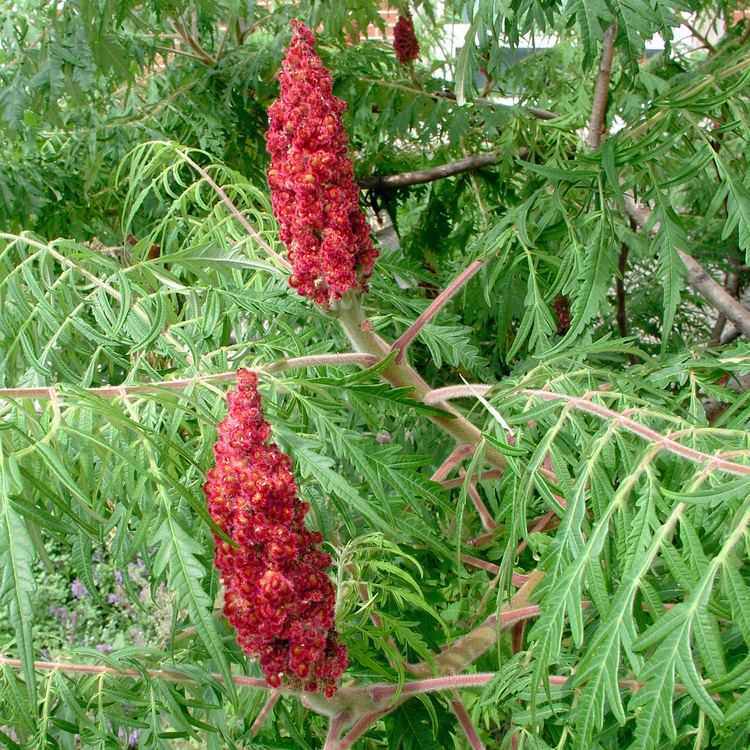
Staghorn sumac spreads by seeds, and by rhizomes to form colonies, with the oldest plants in the center, and the younger plants radiating out. It grows quite aggressively.
Staghorn sumac is not closely related to poison sumac (Toxicodendron vernix), despite the common name.
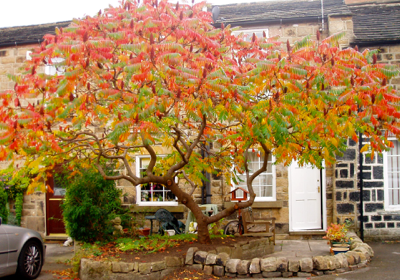
In late summer it sometimes forms galls on the underside of leaves, caused by the sumac leaf gall aphid, Melaphis rhois. The galls are not harmful to the tree.
Cultivation
Staghorn sumac is an ornamental plant which provides interest throughout the year; though its vigorous, suckering habit makes it unsuitable for smaller gardens. It can grow under a wide array of conditions, but is most often found in dry and poor soil on which other plants cannot survive. Some landscapers remove all but the top branches to create a "crown" effect in order to resemble a small palm tree. Numerous cultivars have been developed for garden use, of which 'Dissecta' syn. 'Laciniata' (cutleaf staghorn sumac) has gained the Royal Horticultural Society's Award of Garden Merit, is also grown in gardens as an ornamental plant.
The Staghorn Sumac was introduced to Europe in the 17th century and is popular as a garden plant. In both French and German, the common name of the species (Sumac vinaigrier, Essigbaum) means "vinegar tree".
Other uses
Some beekeepers use dried sumac bobs as a source of fuel for their smokers.
The fruit of sumacs can be collected, soaked and washed in cold water, strained, sweetened and made into a pink lemonade. The leaves and berries of staghorn sumac have been mixed with tobacco and other herbs and smoked by Native American tribes. This practice continues to a small degree to this day.
All parts of the staghorn sumac, except the roots, can be used as both a natural dye and as a mordant. The plant is rich in tannins and can be added to other dye baths to improve light fastness. The leaves may be harvested in the summer and the bark all year round.
